Siz education||Content Management System by @ansooch|| 04-03-2022||10% payout for siz-official
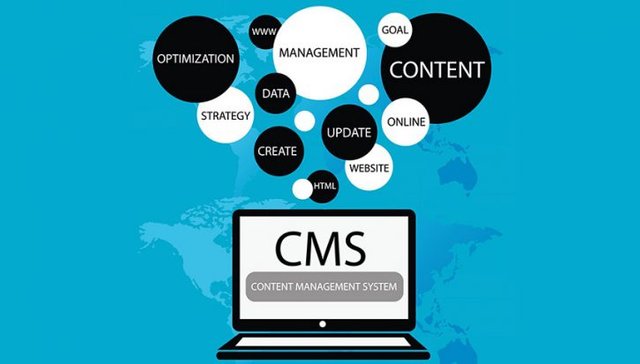
Content Management System
The term ‘Content Management System (CMS)’ has gained popularity in recent years. In fact, it has spread like wildfire throughout the industry.
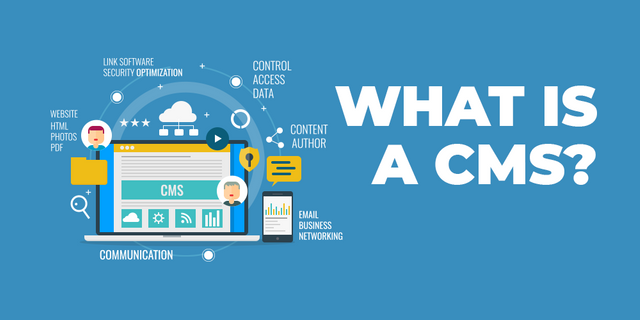
In simple terms, the basic definition of Content Management System (CMS) is provided as follows:
''Software or program used to manage, store and distribute organizational content.''
In simple language, a content management system is a tool that helps you build a website without having to write all the code from scratch (or even be able to write code at all).
Instead of building your own webpage for creating pages, image storage, and other functions, the content management system handles all of your basic infrastructure so you can focus on the forward-looking parts of your website.

What Builds Up a Content Management System?
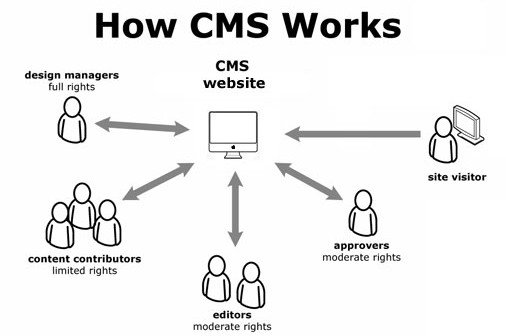
At the technical level, the content management system is made up of two key components:
•Content Management Application (CMA) :
This is the component that allows you to add and manage content on your site (as you can see above).
•Content Delivery (CDA) app:
This is a background, in-process process that captures content that you submit to the CMA, keeps it neat, and makes it visible to your visitors.
Collectively, these two programs make it easy to maintain your website.
It offers cost savings, flexibility, content management, and increased collaboration between team members. However, the key to getting more out of the CMS platform is choosing the right one. So, understanding all the different types of content management systems can help you choose the best option that suits your business.

Functions of CMS
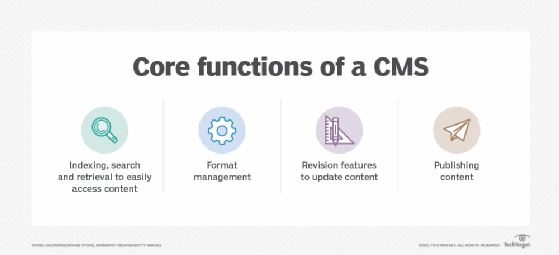
The main function of the CMS are as follows;
1•Accurate index, search and retrieval:
These features identify all data to be easily accessible through search functions and allow users to search by attributes such as publish dates, keywords or author.
2•Format management:
This helps to convert scanned documents and legacy electronic documents into HTML or PDF documents.
3•Review features:
These features allow content to be updated and edited after the first publication. Update control also tracks any changes people make to files.
4•Publishing:
This functionality allows individuals to use a template or set of templates that the organization authorizes - as well as witches and other tools - for content creation and editing.

Types of Content Management Systems (CMS)
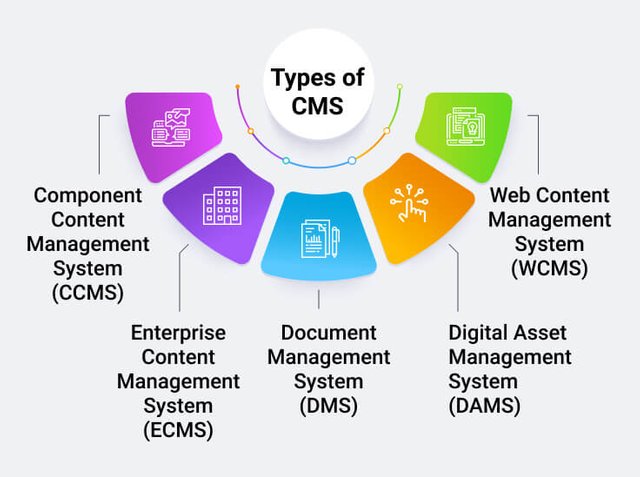
Although the term has faded over the years while describing different types of platforms, Most CMS will fall under these 5 categories. Here are all the types of content management systems.a types of content management systems
1•Comprehensive Content Management System (CCMS)
The Content Management System or CCMS component is a different and unique type of CMS compared to a standard CMS. CCMS stores content at a deep (part) level instead of a document level.Comprehensive Content Management System (CCMS) manages component content instead of organizing page content. These sections can be categories, images, phrases, or even a name.The CCMS is a type of CMS platform designed to maximize content reuse. To do so, sections are saved only once in CCMS. Apart from that, it also serves as a source to allow you to publish content across all platforms such as mobile, Print, PDF, and much more.
The Benefits of the Comprehensive Content Management System (CCMS)
•Reusable
Reuse of content in the CCMS saves a lot of time, effort, and resources needed to write and publish content.
•Openness
CCMS provides a complete overview of the content. As a result, every user can see the content found in CCMS.
•Follow-up
Detailed tracking of your content and related activities is possible at CCMS.
•Omnichannel Publishing
CCMS is a type of CMS that allows you to push content across multiple channels, including the web, chatbots, mobile, print, and more.
•Improved Interaction
CCMS improves workflow and assists in working with technical and non-technical teams.
2Enterprise Content Management System (ECM)
Enterprise Content Management or ECM is a CMS system that allows an enterprise to produce, manage, and distribute different types of content. Also, it ensures that information and documents are delivered by the right audience. These audiences can be an employee, officer, business partner, or customer.With ECM, employees can gain easy access to the stored content needed to complete their tasks. In addition, ECM automatically removes files after storage time to free up unnecessary space.
Benefits of Enterprise Content Management System (ECM)
1• Improved Performance
Document management is taken care of automatically. Therefore, users can focus on content creation and be more productive.
2•Flexibility
ECM allows you to store content in any file type or format and has it processed automatically.
3•Cost-EfficientEnterprise
Content Management is costly as it only saves the required files and removes some.
Document Management System (DMS)
Paper time is gone. however, data management on paper was a thing of the past.Now, Document Management System (DMS) offers a natural solution for managing, tracking and storing files in the cloud. Basically, it is an automated CMS solution for uploading, processing, and distributing texts without the hassle of printing and scanning.
The Benefits of a Document Management System (DMS)
1• Compatible with Nature
DMS is an eco-friendly CMS as it saves paper by storing content in digital format.
2 •Security
DMS has many security measures to ensure that the confidential data of the organization remains in safe hands.
3• Mobile / Remote Performance
DMS allows you to access documents from remote locations, even on mobile devices.
Digital Asset Management System (DAMS)
The Digital Asset Management System, also known as DAM or DAMS, allows you to create, manage, store, organize and distribute digital assets. DAM provides a central library where an employee, client, or contractor can easily access content.In the past, DAM was used to store media files such as photos, videos, and audio recordings. But now, it has a huge variety of formats, including logos, fonts, texts, and more.
Benefits of a Digital Asset Management System (DAMS)
1• Central Library
DAMS keeps content in one place which makes it easy for many users to access.
2• Third Party Publishing Through DAMS,
you can publish content on third-party distribution services, portals, social media channels, and more.
3• Brand ManagementManaging content and product sites is easy for users using DAMS features.
4 Web Content Management System (WCMS)
Web Content Management System (WCMS) is a type of CMS solution designed specifically for websites. WCMS allows you to manage the digital aspects of a website without having prior knowledge of the programs.The Web Content Management System provides tools for authorizing, collaborating, and managing web content management. Unlike other CMS, WCMS does not work with any other content format other than web content.
Benefits of Web Content Management System (WCMS)
1•Default WCMS
publishes content automatically, saves a lot of time and improves workflow management.
2• ScalabilityWith the help of WCMS
, Business owners can measure their companies without worrying about website restrictions.
3 •Personalization WCMS
is a type of CMS that allows you to customize your website with the most personal content and structure.
In addition to these five different types of content management systems, there are others a few types of CMS too. They are categorized based on how they are embedded in your systems. Here are some CMS:
Open source CMS
Proprietary CMS
Cloud-Based (SaaS) CMS
Headless CMS
Custom CMS
These types of CMS can be considered sub-categories of real CMS.

Benefits of using CMS

There are many benefits to using a content management system, including:
•Easy to use.
Due to the user interface, even those with limited technical knowledge can use the software.
•It is easy to search for information.
The built-in search functionality allows users to enter what they want and have a list of returned items - such as the Google search engine.
•Easy to manage content.
Not only is content creation easy, but also deleting content. Content management system makes it easy to unpublish content to keep up to date websites.
•Accessible anywhere.
The content management system may be based on clouds or locations, but users can access content anywhere with an internet-connected device.
•Multiple users interface:
It allows multiple content management systems to makes it easy to manage publishing permissions.
•Instant content updates.
Content management system allows users to manage and update content in real time - without the need for a developer to wait.
•Easy to measure.
Content management system makes it easy for businesses to add new web pages as their business grows without the need for a developer.
•Easy to update.
Development teams can issue updates with just a few clicks.
That's all about the topic. Hope my content will be informative for you. Thanx for your time.

Special mention to
@cryptokraze
@suboohi
@vvarishay
Stay blessed all.
Regards:
@ansooch
Good post dear friend thank you for your attention in siz community.
Report,